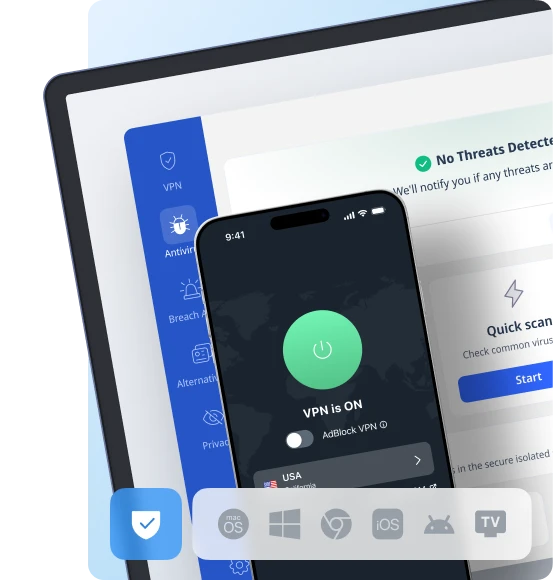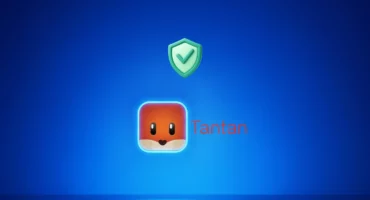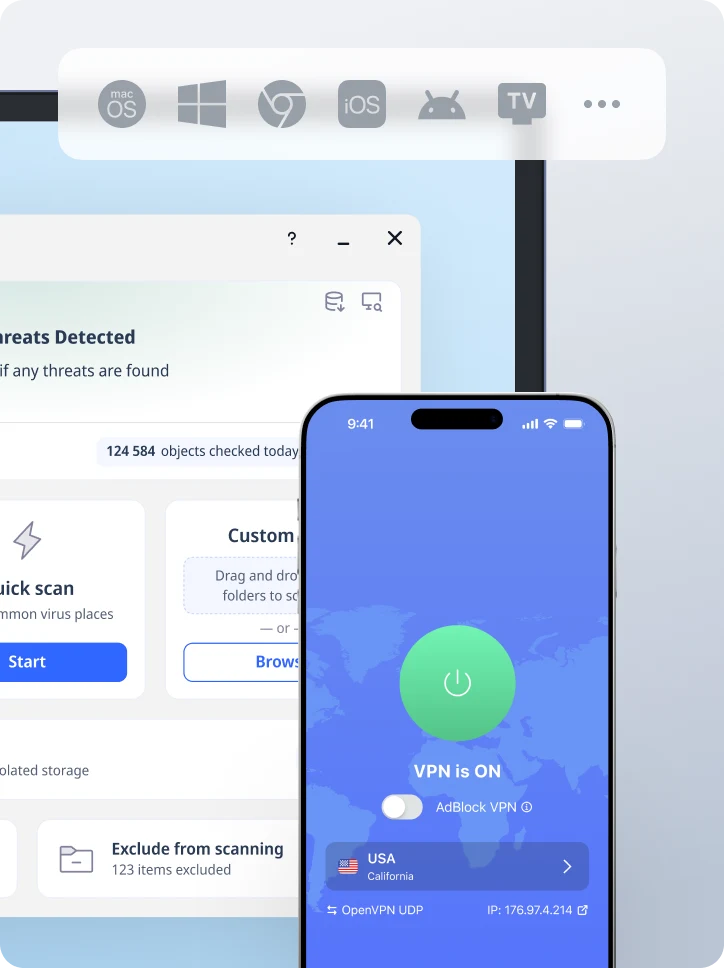Living off the Land (LOTL): What It Is and How to Stay Protected
Say you wake up one morning to find your business’s entire system hijacked, your data encrypted, and your operations at a standstill — all without a single piece of malware being installed. How did that happen?
Instead of introducing foreign code, the attackers used the tools already built into your system, tools you rely on every day to keep things running. This is exactly what happened in the infamous NotPetya attack, which cost global companies billions of dollars.
In this guide, we’ll dive into how Living off the Land (LOTL) attacks work, why they’re so dangerous, and what you can do to protect yourself and your business from becoming the next cautionary tale. Whether you’re a business owner, an IT professional, or simply someone who wants to stay secure, understanding LOTL attacks is the first step to staying one step ahead of these silent threats.

What is Living off the Land (LOTL)?
Cyberattacks are becoming more sophisticated every day. While some rely on malicious software, the attacks known as Living off the Land (LOTL) take advantage of the very tools and systems we use every day. These attacks often go unnoticed because they don’t involve any new, suspicious files or software. Instead, they exploit the existing resources in a network and other legitimate tools, making them harder to detect and bypassing traditional security measures.
Over 50% of cyberattacks in recent years involved LOTL techniques and 70% of security professionals find it challenging to distinguish between normal and malicious activities because of the use of native tools and remote access software. And NotPetya is one of the most on-point Living off the Land attack examples.
But just because LOTL attacks are stealthy doesn’t mean you can’t defend yourself against them. We’ll break down how Living off the Land attacks work, and what you can do to protect your systems from these threats.
One of the most notable Living off the Land attacks from 2017 was the NotPetya attack. At first masquerading as ransomware the malware reached a fast global expansion by targeting Ukrainian companies before expanding its reach to global business networks. The main dangerous aspect of NotPetya came from its ability to use PowerShell and Windows Management Instrumentation (WMI) as legitimate system tools for propagation.
The Windows operating system vulnerabilities enabled NotPetya to travel between networks without file installation so traditional security detection systems proved ineffective. NotPetya caused substantial business interruptions because it encrypted system files and prevented users from accessing their computers at a cost of billions of dollars to affected companies. The early assumption of financial profit as the attack objective was proved incorrect when analysts identified a state-sponsored cyberattack as the most likely cause
The stealthy nature of Living off the Land attacks does not mean organizations can’t take defensive measures to protect their systems. This section explains the operation of Living off the Land attacks together with security measures to defend your systems against them.
Key living off the land techniques used by attackers
Here are the most common Living off the Land techniques attackers use to hit their targets:
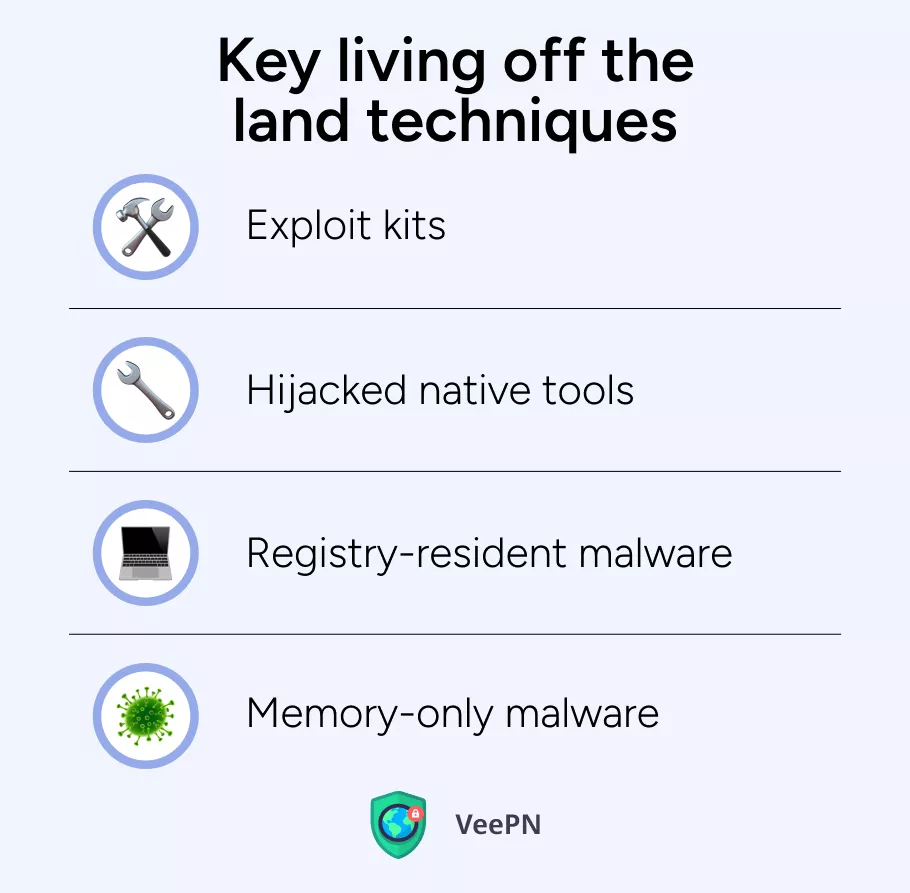
👾Exploit kits. Attackers can take advantage of known software vulnerabilities to initiate an attack on a target system. Rather than installing new malicious files, they exploit these weaknesses and perform the attack directly within the existing system environment as soon as they gain access.
👾Hijacked native tools. Popular system utilities like PowerShell or WMI are used to gain elevated privileges, steal sensitive data, and maintain persistence on the network. These tools are powerful and, because they are trusted, they often fly under the radar of traditional antivirus systems.
👾Registry-resident malware. Instead of installing new malware files, LOTL attackers may plant malicious code directly in the Windows registry or use memory-only malware. Since this code never touches the disk, it can evade detection by security tools that only scan for files.
👾Memory-only malware. Some attackers choose to store their malicious code entirely in the system’s memory, making it even harder for traditional security solutions to identify thm.
Because these attacks use trusted tools and processes that are part of the operating system, they are exceptionally difficult to spot. It’s like an intruder slipping through your front door, wearing your own clothes and using your keys.
How to prevent LOTL attacks
While LOTL attacks are sneaky, they are not invincible. There are steps you can take to significantly reduce your chances of falling victim to these sophisticated tactics:
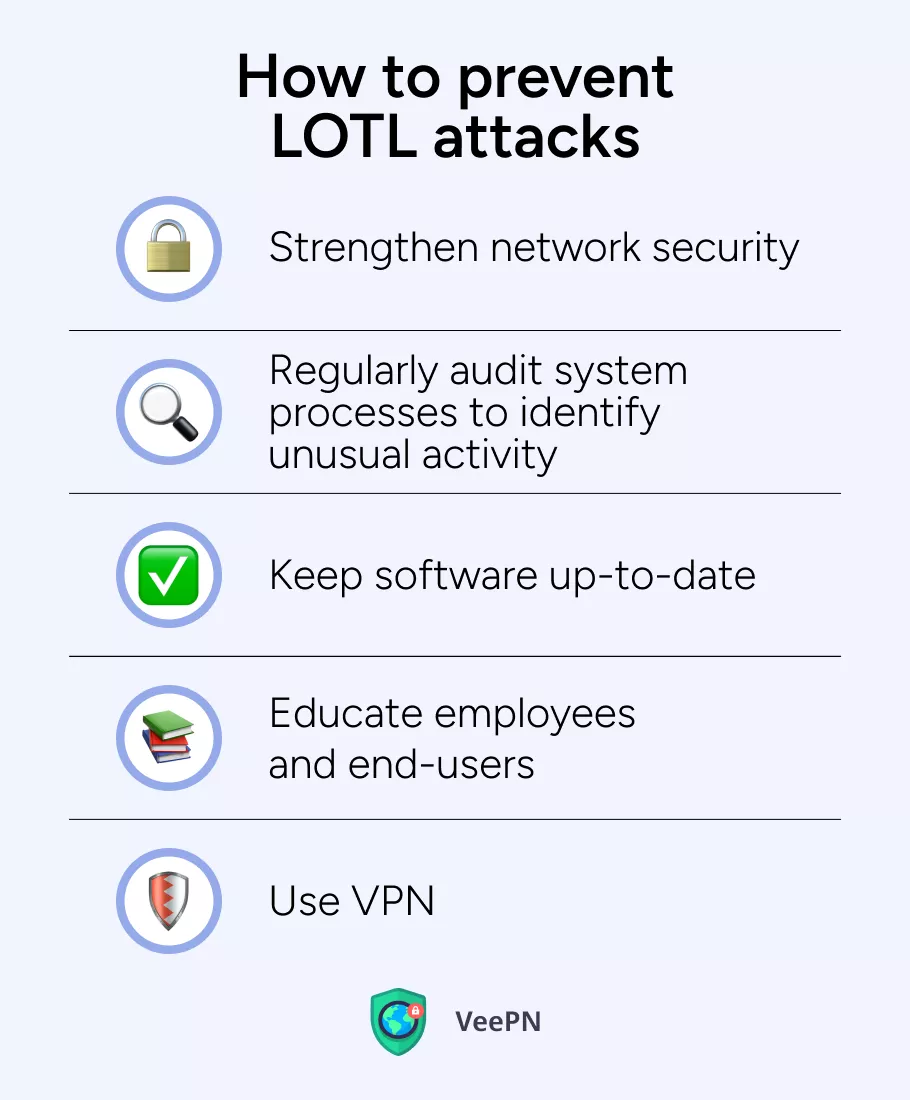
✅Strengthen network security. This is your first line of defense. Limit administrative privileges to only those who need them, and regularly audit system processes to ensure nothing suspicious is happening in the background.
✅Regularly audit system processes to identify unusual activity. Always keep your software up-to-date. Many LOTL attacks exploit known vulnerabilities in outdated systems. By regularly patching these vulnerabilities, you can close potential attack vectors.
✅Keep software up-to-date. Educate your employees or users about the dangers of phishing and spear phishing. These social engineering attacks often serve as the entry point for LOTL techniques. A well-timed phishing email can trick someone into granting access that enables an attacker to use legitimate system tools.
✅Educate employees and end-users. Restrict access to sensitive data and systems. By limiting what each user can access, you reduce the potential damage a successful attack could cause.
✅Use VPN. Virtual private networks (VPNs) prove to be excellent security solutions for safe Internet connection. The encryption protects your network against potential attacks that target insecure public networks. But we recommend you refrain from Free VPN solutions as they pose a significant safety risk because they do not provide strong encryption protocols and they share user data with marketing companies. The premium VPN application VeePN offers complete protection against digital security threats according to our recommendation.
How VeePN mitigates LOTL risks
Using a VPN service like VeePN can be an essential tool in your defense against LOTL attacks. Here’s how VeePN can enhance your online security:
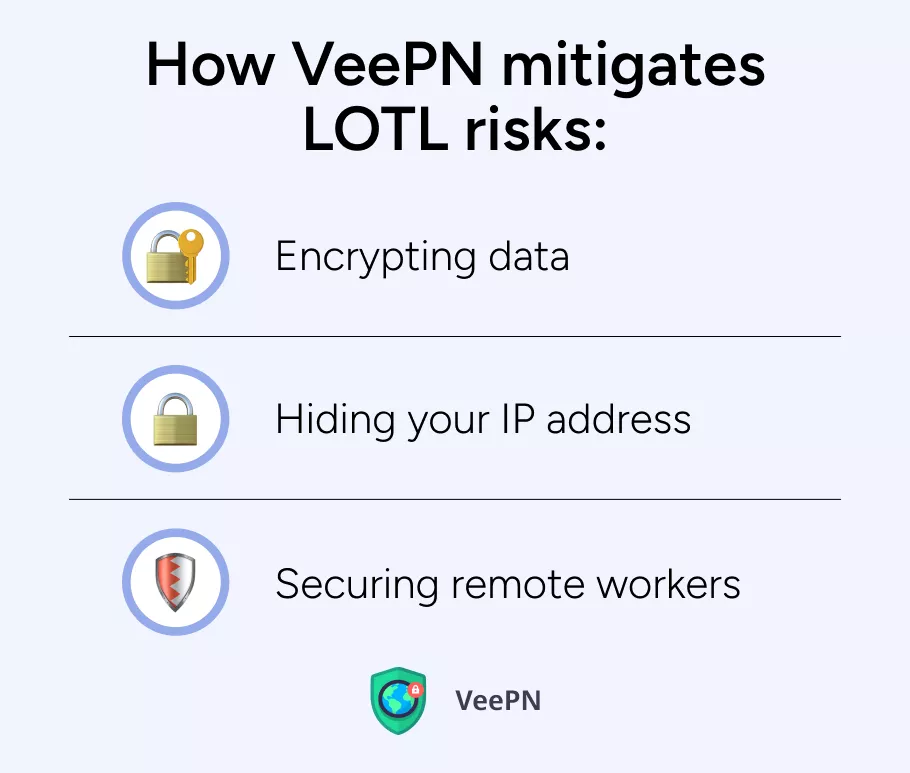
🛡️Encrypting data: VeePN encrypts your Internet traffic with a protocol used by National Security Agency, ensuring that hackers cannot easily intercept your data, even if they are using LOTL methods to infiltrate your network.
🛡️Hiding your IP address: By masking your real IP address, VeePN makes it more difficult for attackers to track your online activities and target you with personalized phishing or spear-phishing attacks.
🛡️Securing remote workers: If you have employees who work from home or on the go, a VPN can protect their connections when accessing your network via potentially insecure public Wi-Fi.
In addition to these features, VeePN also offers such tools as Breach Alert and NetGuard to shield you from any kind of threats, including Living off the Land cybersecurity threats. Get VeePN today and secure up to 10 devices with one subscription!
FAQ
The term “living off the land” in cybersecurity describes a cyberattack technique where attackers exploit system features that already exist to execute their harmful operations. The attackers choose to exploit legitimate system resources instead of using malware or any other tools of “external” exploitation.
The identification of LOTL attacks relies on tracking system tools usage together with identification of abnormal network traffic patterns within your local network. System security depends on reviewing logs and enabling endpoint detection in addition to monitoring unauthorized privilege escalation.
Using a VPN creates secure network traffic and IP address privacy which makes it more challenging for attackers to extract data or attack control servers. The added layer of anonymity through the VPN protection method enables companies to remain unidentified and prevent them from finding weak targets or intercepting network-based sensitive data.
VeePN is freedom
Download VeePN Client for All Platforms
Enjoy a smooth VPN experience anywhere, anytime. No matter the device you have — phone or laptop, tablet or router — VeePN’s next-gen data protection and ultra-fast speeds will cover all of them.
Download for PC Download for Mac IOS and Android App
IOS and Android App
Want secure browsing while reading this?
See the difference for yourself - Try VeePN PRO for 3-days for $1, no risk, no pressure.
Start My $1 TrialThen VeePN PRO 1-year plan
